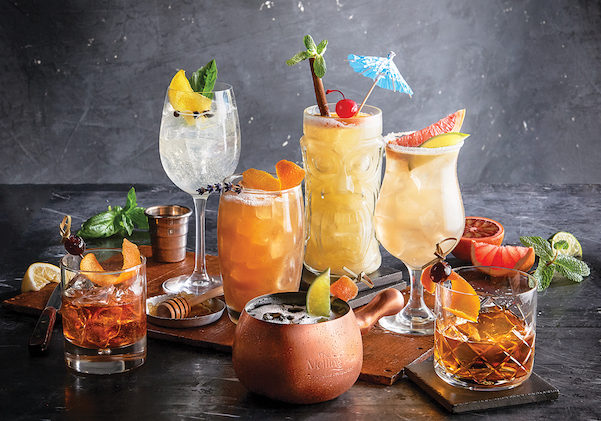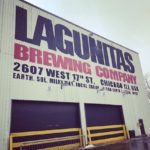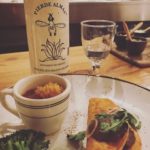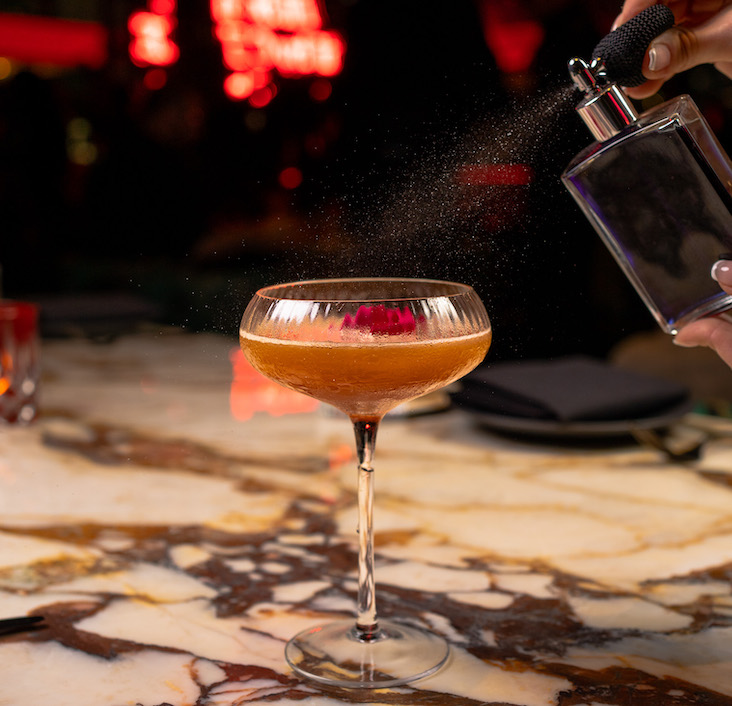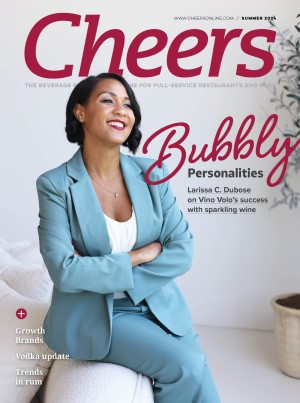2019 Cheers BevX Award Winners
Best Overall Beverage Program: The Melting Pot
As a fondue restaurant concept founded more than 40 years ago, The Melting Pot wasn’t initially known for its beverage program. “Early on, we had only a few drinks on the menu,” notes Bob Johnston, CEO of Front Burner, the restaurant management company for The Melting Pot. “We now have a full beverage program using fresh, simple and clean ingredients.”
The restaurant brand accelerated its beverage efforts considerably in 2018 with its “Best in Glass” initiative. The idea came from a leadership conference presentation by Alan Mulally, the former president/CEO of Ford Motor Co., on the car company’s Best in Class culture.

Paul Brown, The Melting Pot’s beverage manager.
The Melting Pot’s beverage manager Paul Brown wanted similar branding for the restaurant and realized that “Best in Glass” would perfectly describe the mission. The chain launched Best in Glass as a limited-time cocktail offer in May 2018, which helped it gain visibility for the program before it was added to the national menu.
So what are these Best in Glass beverages? According to the menu, “Iconic cocktails crafted in the highest form, made from carefully selected, fresh and exceptional ingredients.” From authentic recipes to premium mixers and spirits to ice, garnish and glassware, every aspect of the Best in Glass beverages has to be special and unique.
For example, THM’s G&T is made with The Botanist gin, Liber & Co. spiced tonic syrup, club soda and lime, while the Authentic Mai Tai combines Appleton Estate Reserve rum, Cointreau, lime and orgeat syrup.

The Best in Glass program includes two versions of the Old Fashioned.
The Freshly Picked Margarita is made with Avion silver tequila, Solerno blood orange liqueur, Cointreau, agave nectar, lime, lemon and grapefruit juices. The Melting Pot Mule combines Absolut vodka, Domaine de Canton ginger liqueur, fresh mint, lime and ginger beer; guests can opt to purchase the drink with the signature copper fondue-pot mug.
The Best in Glass program also includes two versions of the Old Fashioned: Classic, with Jim Beam bourbon, a brown sugar cube, bitters, a Filthy Black Cherry and an orange peel; and Modern, with Knob Creek rye, brown sugar cube, Earl Grey bitters, a Filthy Black Cherry and an orange peel, served over a 2-in. ice cube. The Modern has been more popular, Brown says.
Keeping it simple—and special
Enhanced, clean, fresh and simple beverages are the hallmarks of the Best in Glass program. “Cocktails don’t need to have eight or nine ingredients,” Brown notes.
It was important to use fresh juices and herbs and premium spirits to create drinks “that are simple for the team to execute and simple to understand for the guest,” Brown says.
The Best in Glass cocktails are priced $1 to $2 higher (cocktail prices vary by location but average about $10). Guests are willing to pay more for a higher-quality drink, Brown says.
“Premiumization is a real trend,” he notes. “Guests aren’t drinking as much, but they are drinking better.”
Spirit-free sips
Another beverage trend that has recently materialized: Mocktails. “Interest in non-alcoholic drinks is tremendous,” Brown says. “It was one of those things that we had been hearing about, but weren’t sure that it was real.”

The Bee’s Tea, with orange juice, honey and lavender syrup with iced tea and a spritz of lemon.
But when The Melting Pot’s California locations began reporting a guest demand for mocktails, the chain put one on its dinner menu three years ago. Non-alcohol beverage sales have been growing at a double-digit rate each year since then, Brown says. One factor fueling the interest in mocktails is that more locations are offering brunch, he adds.
The Melting Pot wanted to offer specialty non-alcoholic beverages that echo the feel and idea of the Best in Glass platform. These include the Watermelon Cooler, made with cucumber, watermelon, white cranberry juice, lime and topped with Sprite, and the Bee’s Tea, with orange juice, honey and lavender syrup with iced tea and topped with a spritz of lemon. Spirit-free drinks at The Melting Pot average $4.95 to $5.95.
In addition to the Best in Glass cocktails, other beverages include the chain’s favorites, such as the Love Martini (Malibu rum, peach schnapps, cranberry juice and fresh strawberries); sangrias; after-dinner selections to accompany the chocolate fondues; as well as unique, sharable drinks like portholes and barrel-aged cocktails.
The Melting Pot is testing a Best in Glass wine program of wines rated 90 points and higher, Brown says. The restaurants offer 18 wines by the glass, available in 2-oz., 5-oz. and 8-oz. pour sizes, as well as premium pours and a wide variety of bottle options.
New stores and most remodels include “Wine Focal” areas with Napa Technologies wine stations. All locations offer two popular wine flights made to pair with the four-course dining experience. Each restaurant can select up to 20 of their local selections for a customized offering.
The beer category is dominated by craft brew sales that are local to each location. To remain authentic and on-trend among craft-beer enthusiasts, The Melting Pot mandates styles of beers, such as IPAs and stouts, but not national brands.
Brand evolution
The first Melting Pot opened in 1975 in Maitland, FL, offering just three items: Swiss cheese fondue, beef fondue and a chocolate fondue dessert. The restaurant’s menu and ambiance have expanded considerably in the past four decades as it’s grown to 115 units across the U.S., Canada and Mexico.

The Melting Pot is updating all the stores and emphasizing the bar.
“While we will always be well-known for our fondue, we are now also sought out by guests for our Best in Glass cocktails,” Johnston says.
Better still, The Best in Glass LTO grew item sales by 57% over the previous year’s LTO, and increased sales in dollars by more than 60%. Overall liquor sales were up about 7% year-to-date following the release of the LTO.
The Melting Pot, which secured the trademark for the name Best in Glass in mid-2018, is updating all the stores and emphasizing the bar, Brown says. With the new, on-trend cocktail selections; premium wine pours and experiences; unique, sharable drinks and innovative, spirit-free options, the chain aims to bring additional value to the brand and attract new guests.
But the branding is more than just a catchy tagline. Brown says that the culture has been embraced by all stakeholders, from the executive team at the restaurant support center, to operators in the field to bar staff and servers.
The Best in Glass drinks feel “crafty” and authentic, yet they can be executed easily and consistently by The Melting Pot’s 115 locations. This helps make the national brand feel “more like an independent cocktail bar,” Brown says.

